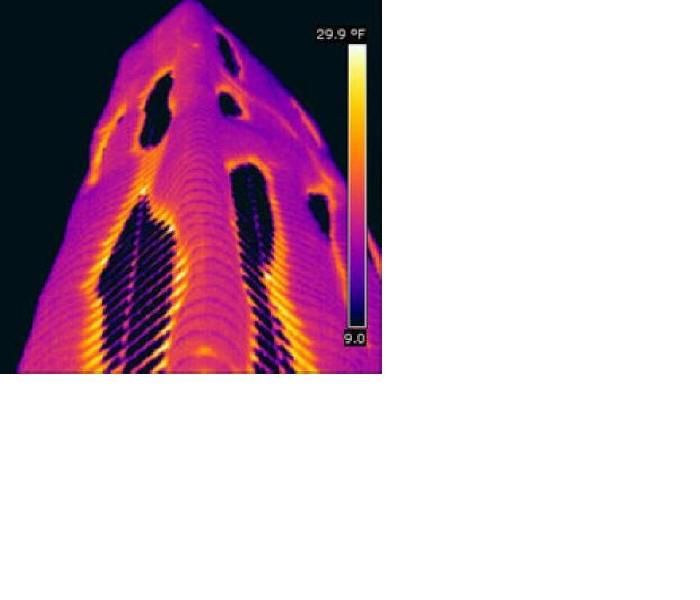What is Thermal Bridging?
9/29/2020 (Permalink)
What is Thermal Bridging? Household mold remover, mold inspection.
Thermal Bridging is Not driving over a Hot Bridge, to cross the Delaware River, and to go to the Jersey Shore, on a Hot Summer day.
Instead, A thermal bridge, also called a cold bridge, heat bridge, or thermal bypass, is an area or component of an object which has higher thermal conductivity, than the surrounding materials, creating a path of least resistance for heat transfer.
Thermal bridges result in an overall reduction in thermal resistance of the object. The term is frequently discussed in the context of a building's thermal envelope, where thermal bridges result in heat transfer into or out of conditioned space.
Thermal bridges in buildings may impact the amount of energy required to heat and cool a space, cause condensation (moisture) within the building envelope, and result in thermal discomfort. In colder climates, thermal heat bridges can result in additional heat losses and require additional energy to mitigate.
There are strategies to reduce or prevent thermal bridging, such as limiting the number of building members that span from unconditioned to conditioned space and applying continuous insulation materials to create thermal breaks.
Thermal bridges can occur at several locations within a building envelope; most commonly, they occur at junctions between two or more building elements. Common locations include:
- Floor-to-wall or balcony-to-wall junctions, including slab-on-grade and concrete balconies or outdoor patios that extend the floor slab through the building envelope
- Roof/Ceiling-to-wall junctions, especially where full ceiling insulation depths may not be achieved
- Window-to-wall junctions
- Door-to-wall junctions
- Wall-to-wall junctions
- Wood, steel or concrete members, such as studs and joists, incorporated in exterior wall, ceiling, or roof construction
- Recessed luminaries that penetrate insulated ceilings
- Windows and doors, especially frames components
- Areas with gaps in or poorly installed insulation
- Metal ties in masonry cavity walls
Structural elements remain a weak point in construction, commonly leading to thermal bridges that result in high heat loss and low surface temperatures in a room.
Thermal Bridging areas, may have or lead to Interstitial Condensation and Mold growth.
Souurces: https://en.wikipedia.org/wiki/Thermal_bridge
YES WE ARE OPEN!!
As Veteran Owned and Operated, SERVPRO of Blackwood and Gloucester Township NJ, offers free estimates for Commercial and Residential Water damage restoration in NJ, Water damage remediation in NJ, Mold inspections, Attic Mold remediation, Mold remediation, Flood damage in NJ, Flood cleaning in NJ, Covid 19 Cleaning in Blackwood NJ, Water damage restoration in Blackwood NJ, Fire Damage in Blackwood NJ, Mold remediation in Blackwood NJ, Biohazard cleaning in Blackwood NJ, Crime Scene cleaning in Blackwood NJ
Phone: 8562277800
****Veteran Owned and Operated
Have Questions? Call Us Today – (856) 227-7800
Jon Barrett
Marketing Manager
SERVPRO of Blackwood NJ Gloucester Township
Phone: (856) 227-7800
Email: sp.jonb@gmail.com
Website: https://www.SERVPROblackwoodgl...





 24/7 Emergency Service
24/7 Emergency Service
